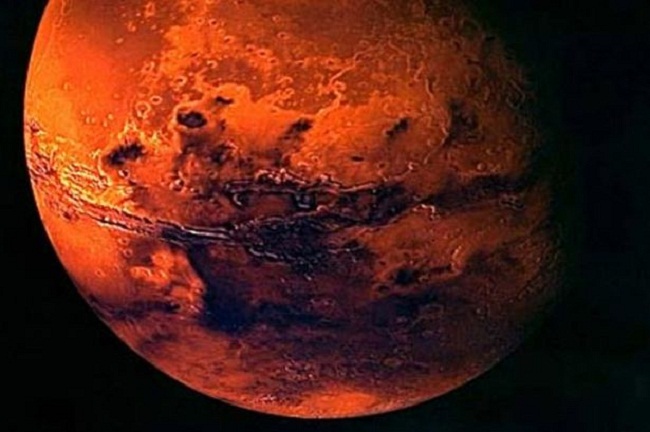The agency’s jet propulsion laboratory (JPL) released audio clips of the alien wind on Friday evening. InSight collected the low-frequency rumblings during its first week of operations.
The wind is estimated to be blowing at between 10 and 15mph. These are the first sounds from Mars that are detectable by human ears, according to the researchers.
“Capturing this audio was an unplanned treat,” said Bruce Banerdt, the InSight principal investigator at Nasa’s lab in Pasadena, California. “But one of the things our mission is dedicated to is measuring motion on Mars and naturally that includes motion caused by sound waves.”
Nasa presented the sounds at a news conference on Friday. Cornell University’s Don Banfield told reporters they reminded him of “sitting outside on a windy summer afternoon ... in some sense, this is what it would sound like if you were sitting on the InSight lander on Mars”.
Scientists involved in the project said the sound has an otherworldly quality. Thomas Pike of Imperial College London said the rumbling was “rather different to anything that we’ve experienced on Earth, and I think it just gives us another way of thinking about how far away we are getting these signals”.
The noise is of the wind blowing against InSight’s solar panels and the resulting vibration of the entire spacecraft. The sounds were recorded by an air pressure sensor inside the lander that is part of a weather station, as well as the seismometer on the deck of the spacecraft.
The low frequencies are a result of Mars’ very thin air density, which is almost entirely made up of carbon dioxide, and, even more so, the seismometer itself, which is meant to detect underground seismic waves that are well below the threshold of human hearing. The seismometer will be moved to the Martian surface in the coming weeks. Until then, the team plans to record more wind noise.
The 1976 Viking landers on Mars picked up spacecraft shaking caused by wind, but it would be a stretch to consider it sound, said Banerdt.
InSight landed on Mars on 26 November. “We’re all still on a high from the landing last week ... and here we are less than two weeks after landing, and we’ve already got some amazing new science,” said Nasa’s Lori Glaze, the acting director of planetary science. “It’s cool, it’s fun.”
















































